FREE Tactical Pen
You can get this lightweight, powerful, and extremely durable Tactical Pen for FREE right now! Just pay a small fee for shipping… But ONLY while supplies last!
The two most common cuts for body armor plates are the Shooter’s Cut and the Swimmer’s Cut. Despite offering similar protection levels against the same type of round, there are a few distinct differences between both to keep in mind. The most important differences are Shooter’s Cut having a distinctly higher weight while offering a more significant amount of protection. Swimmer’s Cut has a slimmer profile for less weight at the cost of lower defense.
What’s the main difference?
Shooter’s cut armor providers a larger coverage area but weighs more and provides less mobility of the arms. Swimmers cut provides higher mobility and lighter weight, but comes at the cost of coverage surface area.
When you decide on a cut, it is essential to keep things in mind, such as your physical ability, kit loadout, firing position, and movement. It is a uniquely personal decision to choose what type of protection you want and feel overwhelming. Keep reading for more on the difference between Swimmer’s Cut and Shooter’s Cut.
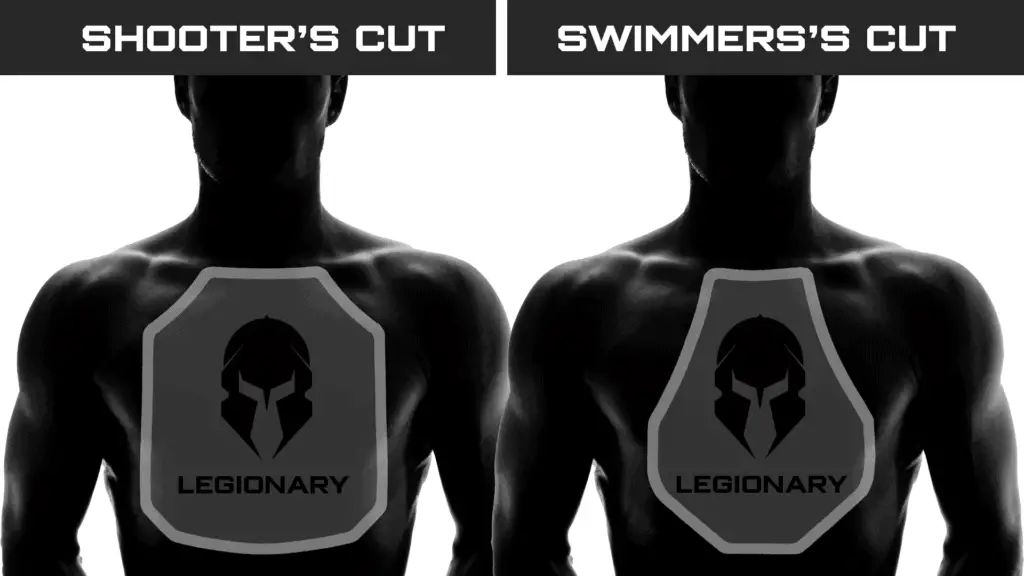
The Differences Between Swimmer’s Cut and Shooter’s Cut
Knowing the differences between Swimmer’s Cut and Shooter’s Cut will eliminate some of the guesswork when it comes to choosing the right body armor. And let’s be honest, body armor isn’t really something you want to choose without doing your research. Here are the key differences between Swimmer’s Cut and Shooter’s Cut.
Weight Difference
One of the major differences between Shooter’s Cut and Swimmer’s Cut body armor is the weight. This is an important factor in considering which one is best for you.
More Material in Shooter’s Cut
The Shooter’s Cut is a bit heavier as there is more material offering protection. Different brands’ weight varies depending upon the level of safety and material. It is essential to keep in mind that there is no perfect answer to body armor, and there will be certain flaws inherent in all choices.
Spartan Armor Systems
Spartan’s store has a large selection of Shooter’s Cut available in both steel core and ceramic plates. The average weight of a Level III steel core is roughly 8 pounds, while the Swimmer’s Cut of the same level is 7 pounds. Nearly all of Spartan’s ceramic plates are exclusively Shooter’s Cut with a level III protection weighing in at about 4.5 pounds.
Armored Republic AR500
The offering at AR 500 is a bit more limited than spartan, with shooters and SAPI armor cuts being their standard. A Level III steel plate weighs 8 pounds and is only available in Shooter’s Cut. The lightweight options at AR 500 are all Swimmer’s Cut. With the steel core, they are more expensive and weigh in at 6 pounds.
RTS Tactical
The guys over at RTS do not have a wide range of plates. They only offer traditional SAPI style cut that weighs 7.9 pounds for Level III stell protection.
Hoplite Armor
Swimmer’s Cut is only available in Level IV armor, making it lightweight but expensive. Ceramic plates weigh in at 6.7 pounds for the standard size. There is no Shooter’s Cut available, but there is SAPI in all levels from IIIA to IV. Level III ceramic core plates weigh 8.5 pounds, while level IV is only slightly more massive at 8.7 pounds.
If you are willing to pay a premium for SAPI plates, there is a lightweight option at 6 pounds, but the price is incredibly high at nearly $2,000 for a pair. The difference in weight may seem small, but it can make a world of difference in long term engagements. A couple of extra pounds per plate can quickly exhaust you. When you add things such as weapon magazines and additional equipment, the weight can add up fast.
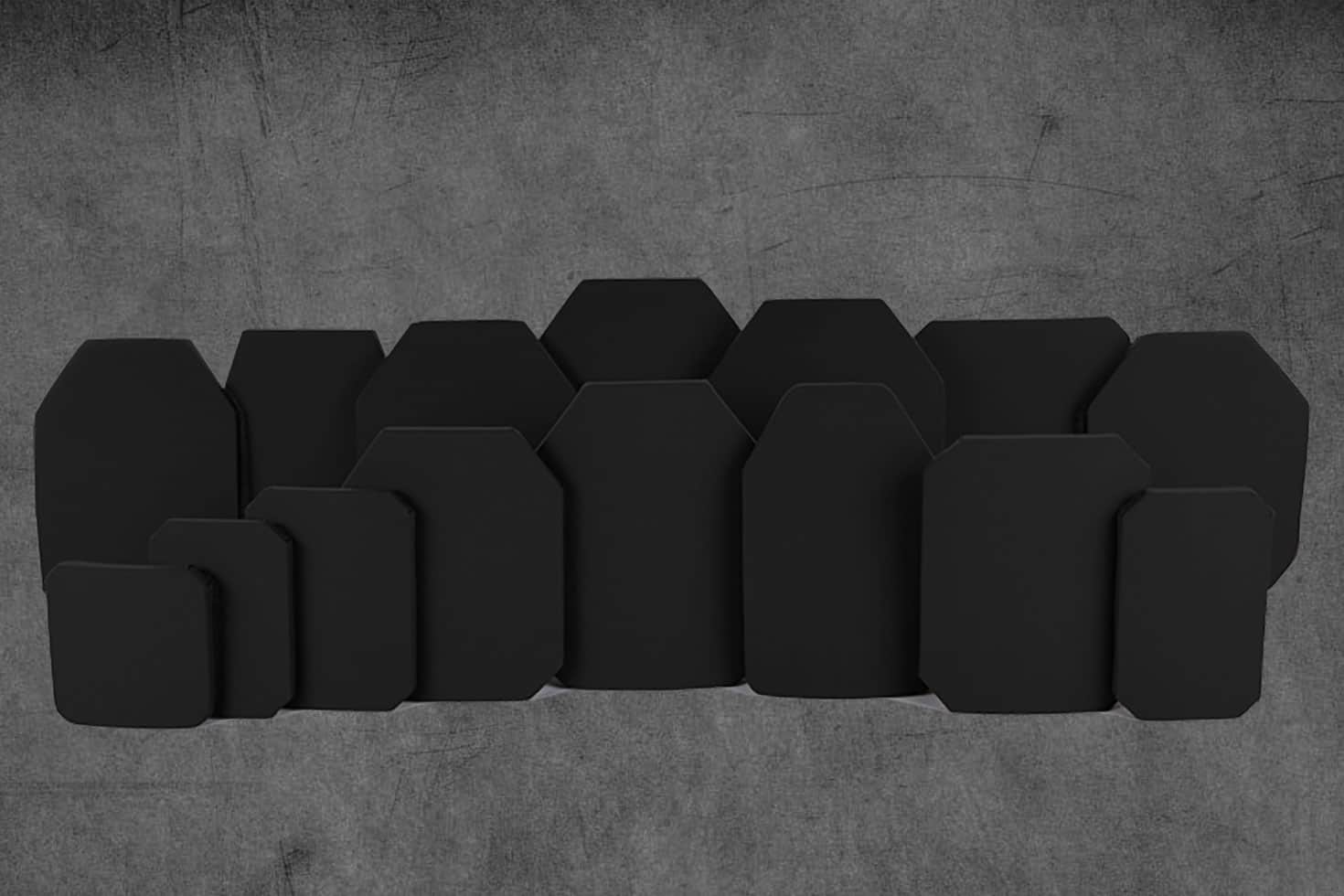
Area of Coverage
There is a significant difference in the coverage of Shooter’s and Swimmer’s Cut plates. Opting for a smaller size and lighter weight can significantly reduce coverage areas for one Cut vs. the other. Plates are not a magic solution to your armor needs, but they can create a unique and lifesaving choice.
Shooter’s Cut Coverage
The Shooter’s Cut has a larger area of coverage for the chest, covering both the lungs and heart while offering protection for the upper chest and surrounding organs. The nature of the style makes it so larger plates can protect the inside of the shoulders. This increased protection comes at a larger price tag, often upwards of 20% more, and expanded weight the larger the plate you choose to purchase.
Swimmer’s Cut Coverage
Adopting a Swimmer’s Cut for your front armor will still cover the heart and most of your lungs. However, the surrounding organs are more exposed as the Cut takes the 45-degree angle further down, exposing more of the ribs and upper chest.
Full Cut
The full-cut should only be considered by you when used for a backplate or backpack armor. It will cover a significant portion of the upper spine, the entire heart and lungs, and the surrounding area. This much larger offers considerable protection but can impede movement with the arms if you placed the plate in the carrier’s front.
Shooter’s Cut is the clear winner in terms of the protection area. It keeps you the safest while your chest is towards the enemy. As the Swimmer’s Cut covers a smaller space, it does still have its advantages.

Deciding Cut by Level of Protection
With the Swimmer’s Cut being a bit lighter and more agile, it stands to argue that it may be better for higher grade armor. With Level IV armor weighing in at 8 pounds for a swimmer cut, it is nearly the same for the shooter in basic Level III ceramic plates. The NIJ (National Institute of Justice) rates armor in rankings from IIA (a mostly outdated form of plating) to Level IV, ranked to stop armor-piercing rounds.
Level II Protection
Level II is an exclusively soft body armor that is lightweight and concealable. Cuts and style are not much of a factor for this level as the weight is negligible. Level II is rated to stop more common and lower caliber handguns such as a 9mm or .357. Things rated for Level II are generally concealable options or plate carriers themselves.
Level IIIA
The lightest and most widely available option, Level IIIA armor, is generally the first that rigid plates are rated. You will find a wide variety of plate options in ceramic, steel, and soft armor. As it offers the lowest protection, it is typically the lightest in terms of plates. Level III is NIJ rated for nearly all handgun rounds and must stop a .44 magnum to qualify.
Level III
This is the first NIJ rating of a plate that has been designed by engineers to stop rifle rounds. It comes at a considerably higher price tag. Spartan armor systems are roughly $200 more per plate than their IIIA offering. Level III is where the consideration of price and weight can begin to factor in between what cut you choose. For the NIJ to rate armor Level III, it must stop a 7.62mm round. This level can defeat the most common weapon systems such as AR-15 and AK-47 models due to its high versatility.
NIJ Level IV
The big daddy and most protective of all the plates, Level IV armor, can defeat rounds intended by shooters to penetrate ceramic armor. Despite being so defensive, you should not wear Level IV plates as a daily carry. Level IV plates are incredibly rigid and inflexible, making the plates uncomfortable, and come at a considerably higher price tag. Able to stop 30-06 armor-piercing rounds, the Level IV armor is a strong contender for the Shooter’s Cut to exclusively protect the heart and lungs.
The NIJ level that you consider can have an enormous impact on what plate cut you should consider. For concealed wear in the lower NIJ levels, Swimmer’s Cut can be optimal for its slim fit and curved edges. When you are anticipating a more significant threat and or wearing overt armor while moving around a lot, then a Shooter’s Cut could be the way to go. As with everything, it comes down to preference at the end of the day.
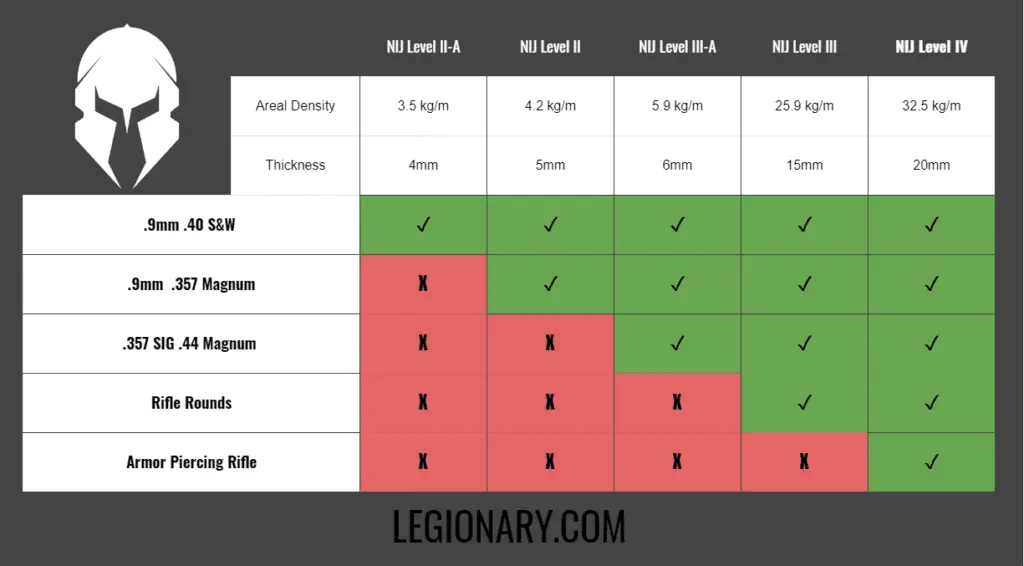
Shooting Position and Flexibility
Breaking it down further, you have to ask yourself, what is your armor’s intended purpose? Those who are not military trained and are acting in a civilian capacity will have a different need than a person who will be shouldering a rifle.
Does Your Stance Have a Lot of Movement?
When you take a prone shooting stance or intend to remain in a covered position and not move a lot, for example, the Swimmer’s Cut may be for you. The slimmed-down profile and more rounded edges commonly come with a Swimmer’s Cut plate are more comfortable when movement is not necessary. If you are remaining prone, the ground will protect you most of the time, and you will most likely have a full plate in the back.
Do You Need Extra Padding in the Shoulder?
The sharp angle of a Swimmer’s Cut makes placing a rifle more comfortable. It allows for a more considerable amount of the buttstock to set into the shoulder. You will find it is more comfortable for those who have more noncombative jobs as well.
Do You Need Flexibility?
For things such as relief efforts and journalism in hostile areas, there is a need for flexibility. Having a smoother cut of the plate allows for more freedom of movement when bending. The lower weight can help reduce the burden on those working backbreakingly long hours. A Swimmer’s Cut plate has fewer surfaces that can contact something you are working on within a dangerous scenario. Additionally, this can help keep the plate fresh and keep greater freedom of movement.
On the flip side, we have the Shooter’s Cut. This choice is far better for those who will be making a more active presence on the field. When you are consistently shouldering a rifle or moving from place to place, the Shooter’s Cut has a slight advantage. Due to the larger area of protection, it can offer security when moving into areas where the location of threats is unknown. While less flexible, it works well with fitting into the rigid movements that tactical operations require. Additionally, the Shooter’s Cut is very similar to that of SAPI armor, the US military standard. The increased prices can be worth it if you plan to be on your feet and move a lot.
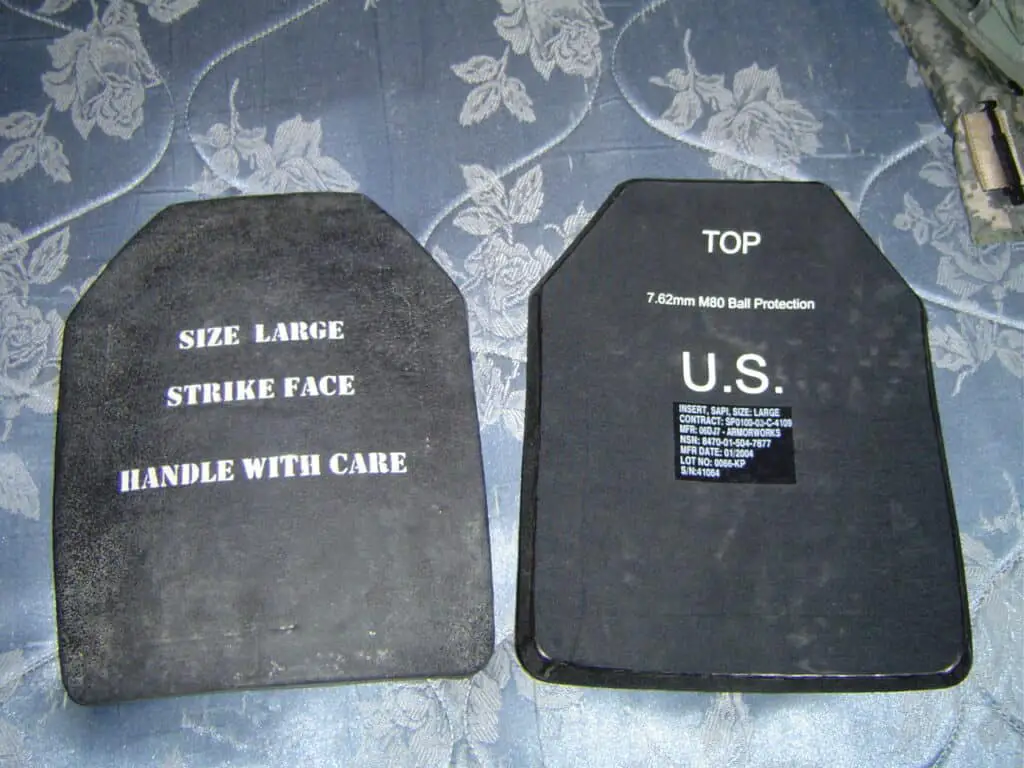
Are Shooter’s Cut and Swimmer’s Cut Made Differently?
The actual process of creating armor is relatively the same between both types of cuts, with only the design when milled down to size differing. Creating steel plates differs slightly from ceramic; however, the Cut does not affect the material or creation process.
What are the SAPI plates?
Small arms protective inserts, or SAPI, was initially developed by the US military to protect soldiers from rifle fire. Most SAPI style plates are level III or higher and usually only offer rifle protection. This specific style contrasts the Shooter’s Cut that is more widely available.
Allows for Less Movement
SAPI cut plates have a very distinct 45-degree angle cut that is very high up on the plate’s top. The plates cover a larger area than the Shooter’s Cut while restricting a bit of your shoulder movement.
Availability
Still, they lack the distinctive bottom curve of other commercially available plates. You can purchase SAPI-style plates; however, ESAPI (enhanced small arms protective insert) is only available for military use and should be approached with skepticism.
Weight
The small arms protective insert weighs in at around 9-10 pounds, depending on the manufacturer. This increase in weight does not come with a significant increase in protection. The negligible difference between SAPI plates and Shooter’s Cut makes a choice between them relatively easy.
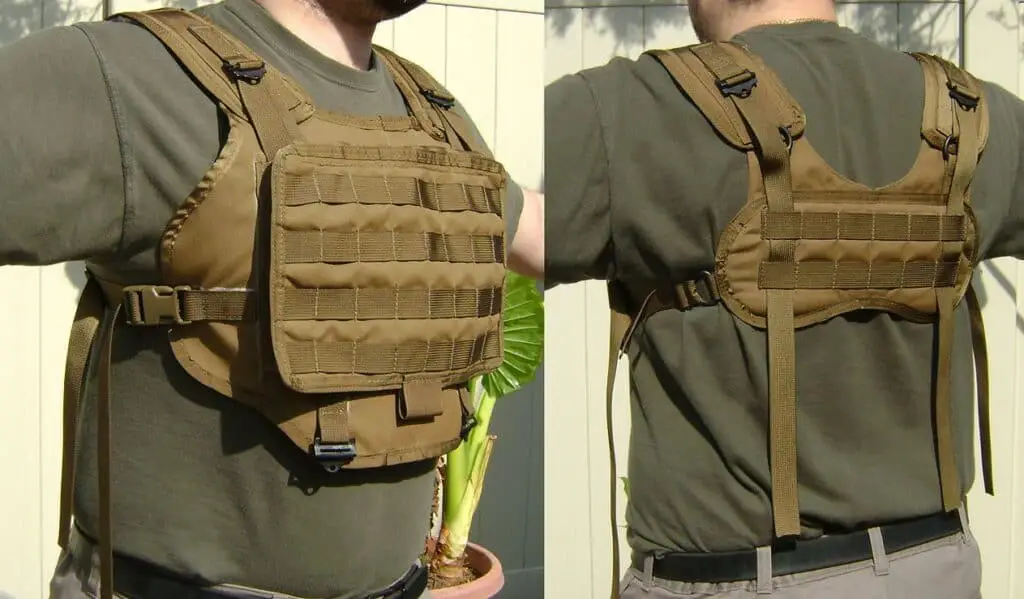
Additional Factors in Choosing Swimmer’s Cut or Shooter’s Cut
Now that we’ve outlined the differences between Swimmer’s Cut and Shooter’s Cut, you probably have an idea of which one will work best. Up next, we’ll go over a few additional factors to help you make the final decision.
Should I Consider Adding Trauma Pads?
You can add a trauma pad to body armor to increase overall safety and comfort. When you use a trauma pad, it helps to absorb the energy around that strikes your plate. The added layer of protection reduces bruising by stopping the plate from deforming and pressing into your torso. A Shooter’s Cut style rigid plate would benefit significantly from pads’ addition. It covers a larger area and has more points that can be impacted by enemy fire.
The Swimmer’s Cut benefits from having trauma pads inserted in the same way as the shooter; however, it may be less necessary. The plate covers less area and is generally more comfortable. When purchasing armor, you should always consider pads for back plating, regardless of Cut. The added resistance and ability to disperse the energy from a hit can save your spine from bruising or breaking. While plates have the specific purpose of protecting your life and defeating rounds, getting shot can hurt and leave lasting damage if struck in a critical area.
Measuring Yourself for A Plate
The most common size for plates is what is considered medium or large by most companies. 10×12 is the standard you will see across all the major armor retailers. The medium size fits most body types very well and can be easily switched to new carriers as it is the standard.
Where to Measure
When you measure yourself, it is vital to keep in mind the locations you want to protect with hard armor. The heart is the most crucial organ to defend, with the lungs being almost always covered by armor. You want to measure from the top sternum bone down to midway between your belt and bottom ribs. For the width, you should measure the middle of your chest, from pectoral to pectoral.
Consider Your Body Type
With the Swimmer’s Cut’s slimmer profile, those who have a thinner torso may find a better fit. The sizes are the same when ordering your armor between all of the cuts, as the measurements have more to do with carrier storage. Knowing ahead of time if you would prefer a Swimmer’s Cut due to a slimmer physique can help you be more comfortable while not sacrificing as much in terms of peace of mind.
Does the Cut Affect Side Plates?
All of the pieces within a kit have to fit together, almost like a puzzle. The addition of side plates can increase your overall protection while simultaneously increasing the weight that you have to bear while wearing the armor. The Cut of your front armor has very little to do with the security that side plates offer. The additional plates are something you’ll need to consider, and weigh the options as to whether or not that something you want to have. Keeping in mind why you are using side plates can inform whether to choose Shooter or Swimmer’s Cut. If your goal is to increase ballistic protection, a shooter or SAPI Cut could be the right way to go.
Should I Wear Overt or Covert Body Armor?
While it comes down to your personal choice and the situation you are in, there is a case to be made for covert body armor to be more prevalent. When encountering a dangerous individual while wearing overt plates, you make the armor less of a target. Most people will fire at center mass, but if they notice armor plates, the attacker could aim elsewhere, somewhere your armor does not protect.
Donning covert armor under the clothing can help ensure that it takes a hit, rather than weighing you down to be shot elsewhere. Undercover armor’s use loses value when higher grades of protection are needed and when bad guys expect protection. Wearing a vest under your clothes does little for you in an active warzone.
The Cut can do a lot if you find yourself in a situation with undercover armor protecting your vitals. Opting for the slimmer and lighter Shooter’s Cut will help with the concealability as the curves seem more natural to the human body. It is essential to consider all factors when choosing your body armor as different carriers can only handle specific models of plates.
Can My Shooter or Swimmer’s Cut Plate Be Used for Backpack Armor?
While you can use a shooter or Swimmer’s Cut plate in an armored backpack, it will not protect you as much as a full plate will. Armored bags are nothing new, as US military soldiers have been using them since the dawn of armor plates. Now that these bags are available to the civilian population, it can be tempting to use plates you already have to fill the carrier.
Less Flexible
A full cut offers some significant benefits over using frontal body armor plates. First of all, it is more rigid than a Swimmer’s amount, as fewer angles mean more space for the kinetic energy to disperse.
Wear and Tear
Second a cut piece of armor is not generally intended to be placed or moved around. The general rough wear a bag sees can lend itself to weakening plates where impacts happen. On cut plates, these weaknesses can form near the top and sides. As a full cut is just a rectangle, the center mass has less chance of degrading from use.
How Do I Choose A Carrier?
When shopping for a plate carrier, also called a plate vest, you may notice a significant amount of styles and options available. Some carriers out there do not accept the standard 10″x12″ plate, and you should avoid them unless needed for a specific use case. Ensuring that your carrier can handle whatever cut of armor you choose is essential and lifesaving.
Spartan Armor Systems
The Spartan Armor Systems Lightweight Sentry Plate Carrier is a versatile piece that can handle both shooter and swimmer cut plates. This carrier can help keep you light and cool while still providing the same level of protection as bulkier models. Due to its smaller silhouette, the sentry plate’s drawback cannot accept 11″x14″ plates.
AR 500
The Testudo Gen 2 Plate Carrier by AR 500 contrasts the spartan armor by allowing all plate sizes to be supported. This flexibility comes at a larger price tag and an increased area of your body covered by the hot fabric.
Both of these retailers have a number of available plate carriers, and it can ultimately come down to preference. Some vests can be rated Level II or III on their own by use of kevlar. These higher protection vests come at a premium. Companies intend them for use with plates of Level III+ or Level IV.
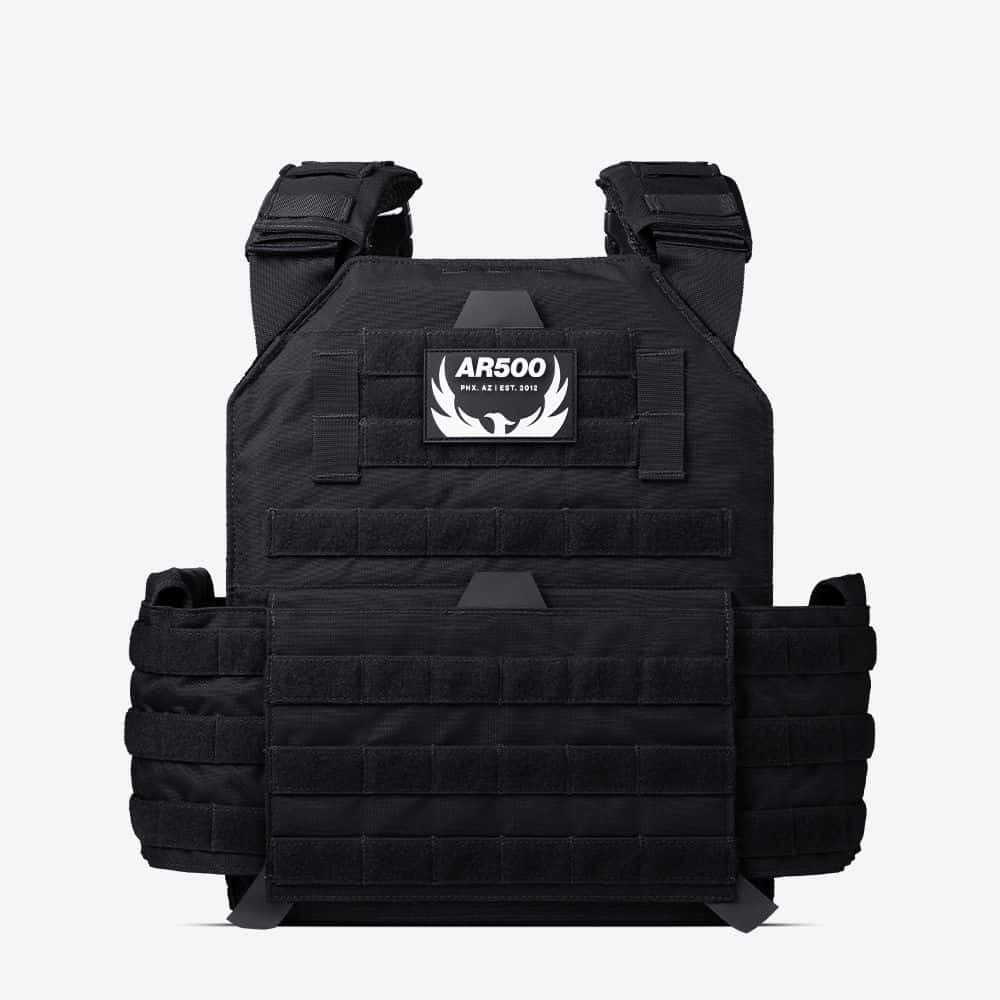
Additional Body Armor Pieces to Consider with Swimmer’s Cut and Shooter’s Cut
Several items can be useful when considering body armor. Taking into consideration the additional weight of add on items and the loss of mobility can lead you to a different plate and carrier choice.
- First Aid Kit: An essential part of any kit for every scenario, a first aid kit can sometimes be more lifesaving than the armor itself. The average trauma kit weighs less than 2 pounds and is well worth the purchase.
- Ballistic Helmet: A ballistic helmet weighs a bit more than your average bike helmet. With the middle coming in around 3.5 pounds, a helmet can save your life. Still, it can increase your body temperature and limit movement.
- Magazine Pouches and Mounts: Magazine pouches can quickly take up space depending on the amount you are carrying. If you have a larger carrier with more room for pockets considering a Shooter’s Cut could be better.
- Abdominal Armor: If you are purchasing side plates, front and back plates, and shoulder pads, you should also consider abdominal armor. It increases the total weight but can stop a round from penetrating your stomach and diaphragm. Abdominal armor is not as effective as chest armor due to the carriers’ need to be more flexible for movement.
Final Thoughts
To conclude, there is no definitive answer to choosing between swimmer or Shooter’s Cut. While it eventually comes down to personal preference, the Cut also can depend on what activities you will be finding yourself doing. Medical, relief workers, hunters, snipers, police officers, and even just those with a very slim torso can find much use from the Swimmer’s Cut. The lighter weight and more maneuverable form allow those who are not directly in danger from rifle attacks to breathe easier by protecting the vital organs.
Military service members, civilians in danger of rifle attacks, and police in high danger areas may find the Shooter’s Cut more to their liking. While the US military utilizes the standard SAPI, veterans who have recently transitioned out will find familiarity with the Shooter’s Cut. The increase in protection helps bolster the versatility of the armored plate. Choosing a plate is just the first step to personal body armor protection. Several other factors go into picking the right armor for you. Things such as carrier choice, threats, accessories, and use case can all affect your personal decisions.
OUR RECOMMENDED TACTICAL GEAR LIST:
- Best Health and Fitness Tracker, Whoop. Get 1 Month Free: See it here!
- EDC Assisted Opening knife we can’t live without: See it here!
- Best EDC Concealed Carry Pistol: See it here!
- Extreme Performance Morning Dink: See it here!
- Best 3D Printer For Gun Parts and Accessories: See it here!
- Our Top Rated EDC Flashlight: See it here!
- AR Red Dot Sight We Can’t Live Without: See it here!
- Best Handgun Safe For Quick Access: See it here!
- Top Wireless Security Camera For Home Security: See it here!
- The Range Bag You’ve Always Been Looking For: See it here!
- CIA Approved Sharp Shooting Course: See it here!


